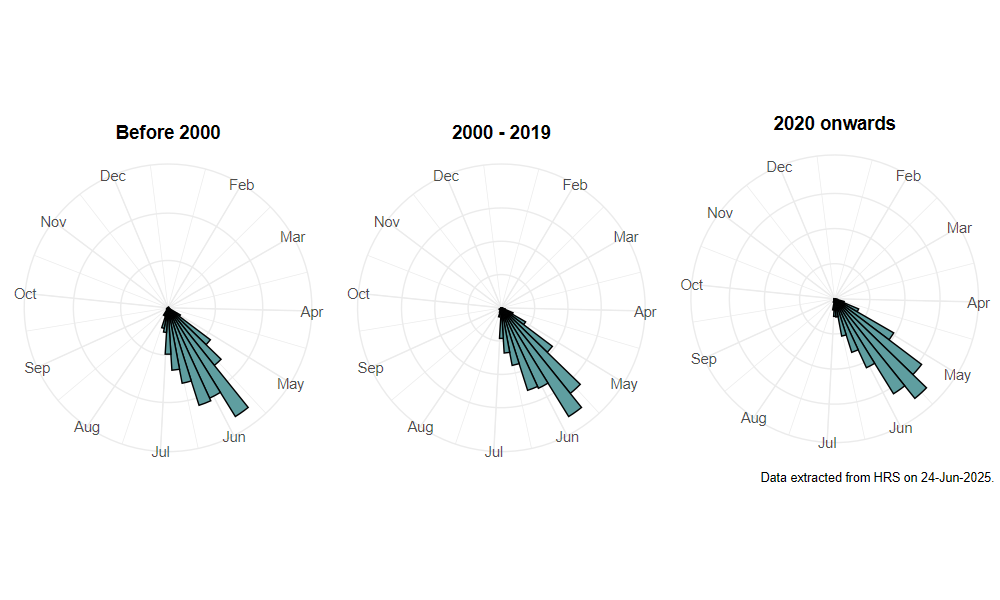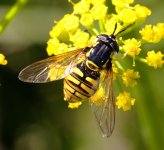Chrysotoxum cautum (Harris, 1776)
Identification
Identification difficulty = 2. ![]()
![]() according to Ball & Morris, 20241
according to Ball & Morris, 20241
Biology
The larva of this species remains unknown, but larvae of this genus appear to be associated with ant-attended root aphids. Adults are usually found in well drained grassy places, often near shelter such as woodland edge or hedgerows where they visit a wide range of flowers. Seen in flight, they have a striking resemblance to a social wasp.
Flight period
The following plots show the number of unique records per week excluding those reported to be of immature stages.

Distribution
This species occurs south and east of a line from the Severn to the Humber (an almost complete reversal of the range of C. arcuatum), except for scattered localities along the coast of Wales and the coast of north-west England. It is locally abundant, especially in southern-central England. This is a species that might be expected to show an expansion of range but as yet there is little evidence of such movement.

Trends
The following plots show the Frescalo TFactor vs year and a map of the rescaled frequency (all records) for the species.
-
Ball, S., & Morris, R. (2024). Hoverflies of Britain and Ireland. WILDGuides (3rd ed.). Oxford: Princeton University Press. ↩
